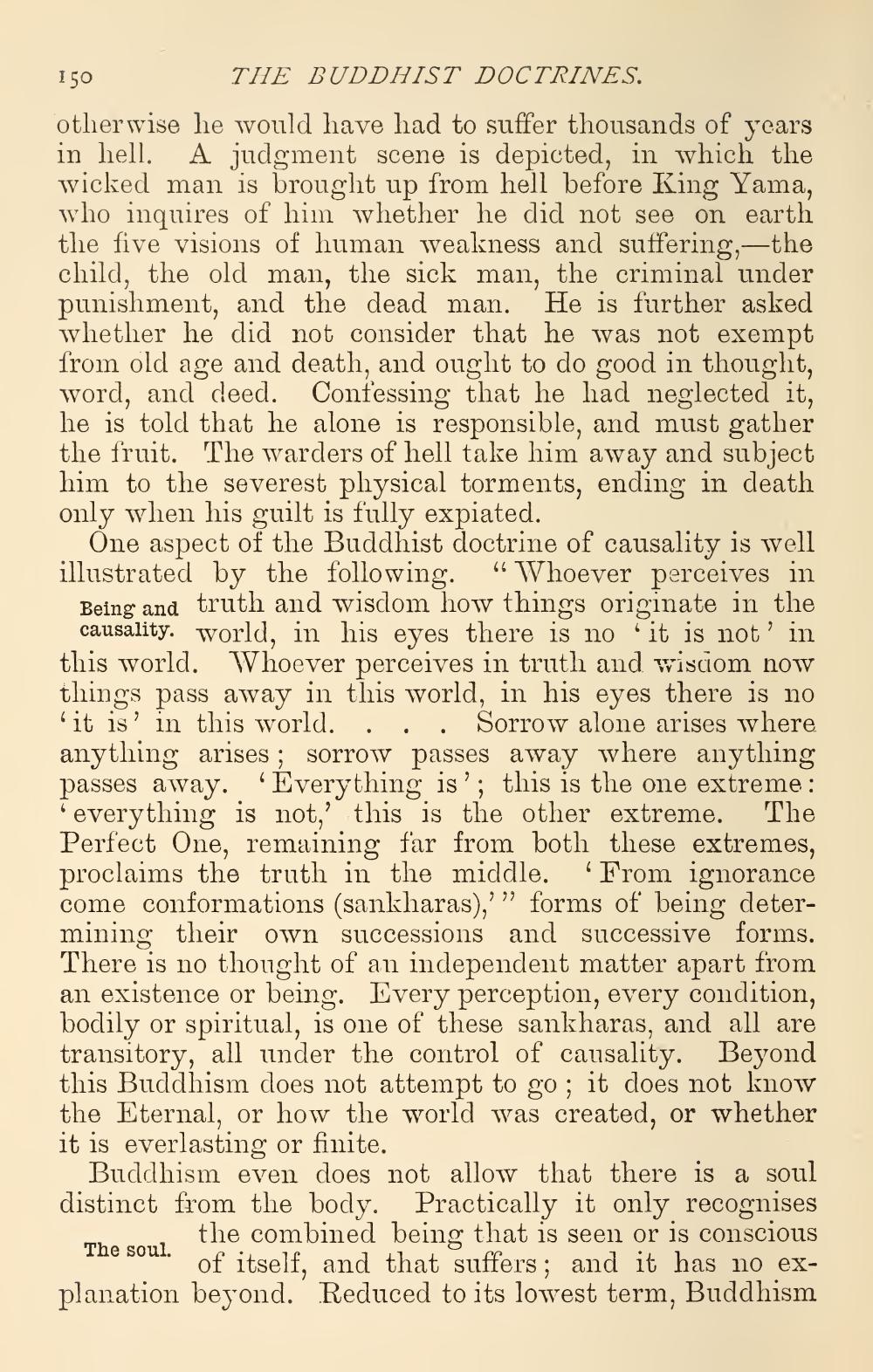________________
150
THE BUDDHIST DOCTRINES. otherwise he would have had to suffer thousands of years in hell. A judgment scene is depicted, in which the wicked man is brought up from hell before King Yama, who inquires of him whether he did not see on earth the five visions of human weakness and suffering the child, the old man, the sick man, the criminal under punishment, and the dead man. He is further asked whether he did not consider that he was not exempt from old age and death, and ought to do good in thought, word, and deed. Confessing that he had neglected it, he is told that he alone is responsible, and must gather the fruit. The warders of hell take him away and subject him to the severest physical torments, ending in death only when his guilt is fully expiated.
One aspect of the Buddhist doctrine of causality is well illustrated by the following. “Whoever perceives in Being and truth and wisdom how things originate in the causality. world, in his eyes there is no it is not’ in this world. Whoever perceives in truth and wisdom now things pass away in this world, in his eyes there is no 'it is' in this world. ... Sorrow alone arises where anything arises; sorrow passes away where anything passes away. Everything is'; this is the one extreme:
everything is not, this is the other extreme. The Perfect One, remaining far from both these extremes, proclaims the truth in the middle. 'From ignorance come conformations (sankharas),'” forms of being determining their own successions and successive forms. There is no thought of an independent matter apart from an existence or being. Every perception, every condition, bodily or spiritual, is one of these sankharas, and all are transitory, all under the control of causality. Beyond this Buddhism does not attempt to go; it does not know the Eternal, or how the world was created, or whether it is everlasting or finite.
Buddhism even does not allow that there is a soul distinct from the body. Practically it only recognises
the combined being that is seen or is conscious "he sout. of itself, and that suffers; and it has no explanation beyond. Reduced to its lowest term, Buddhism
The soi




